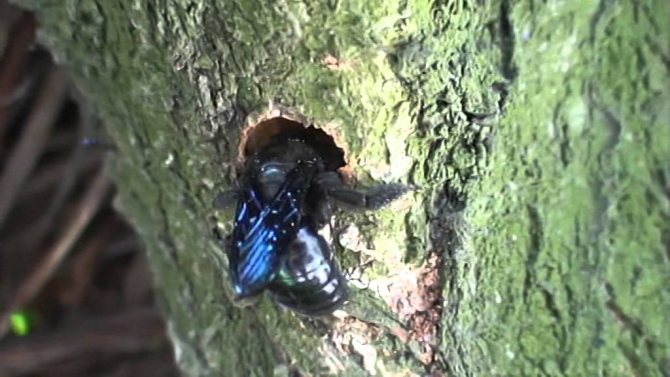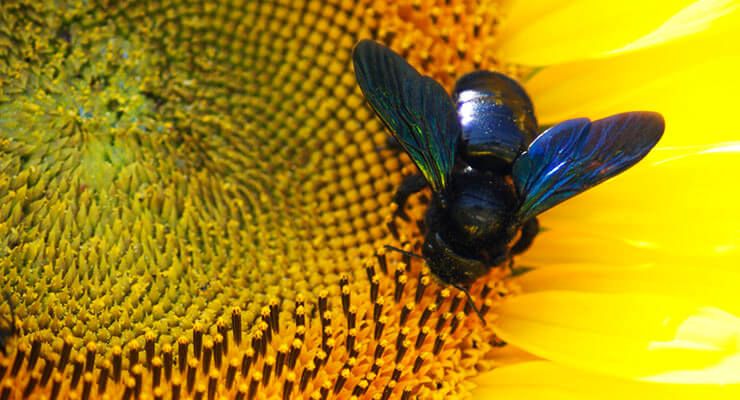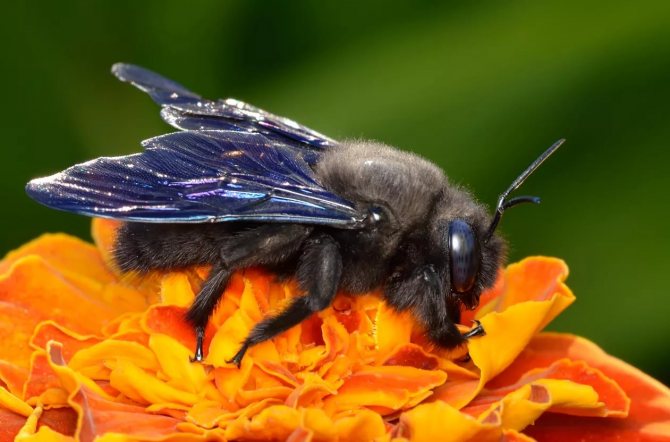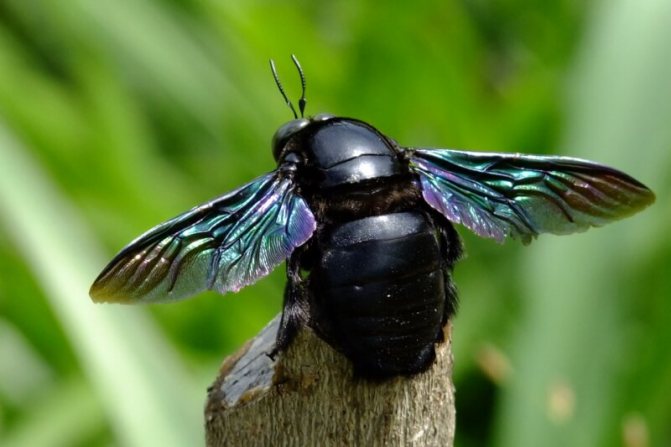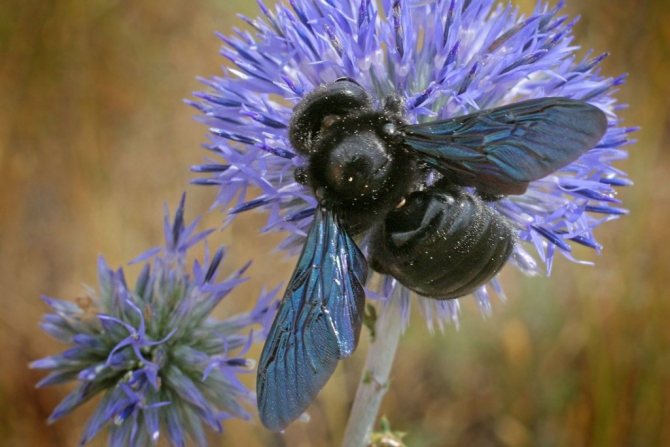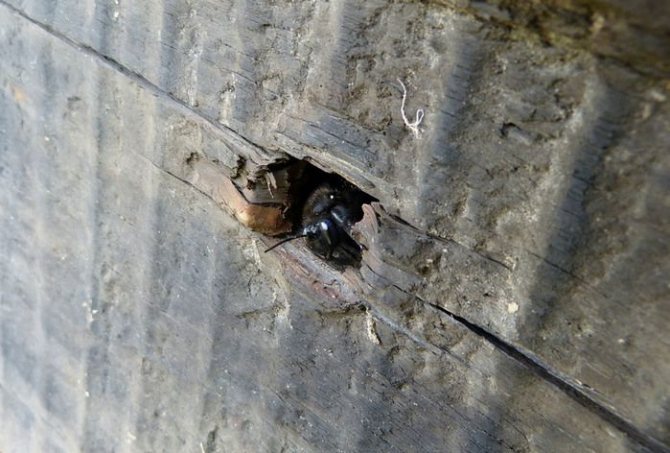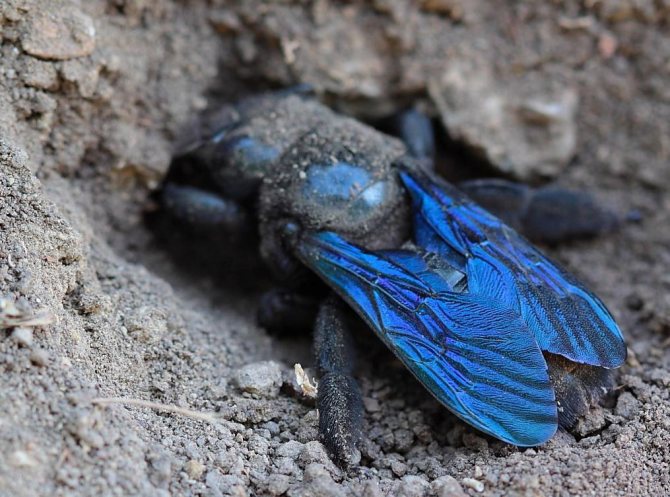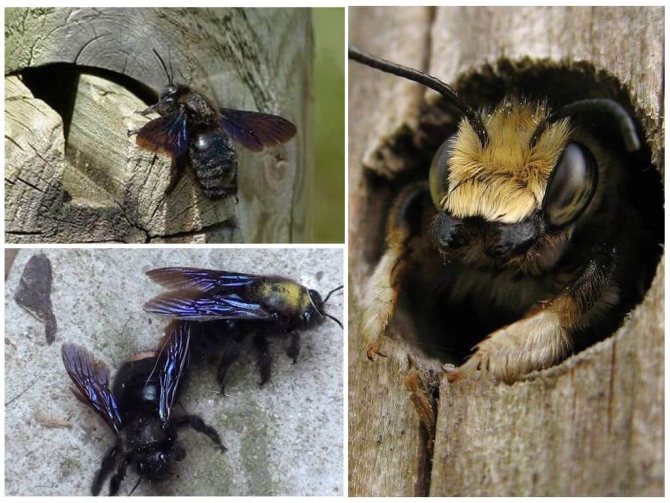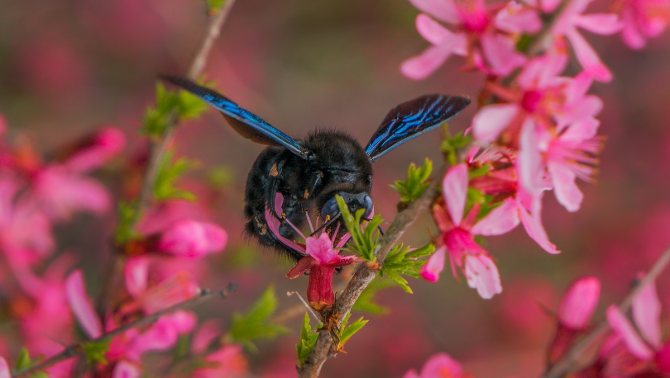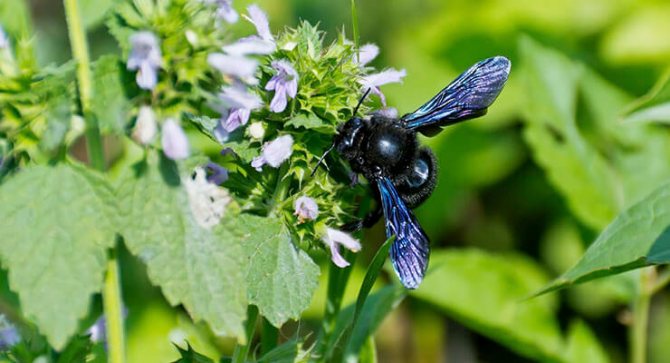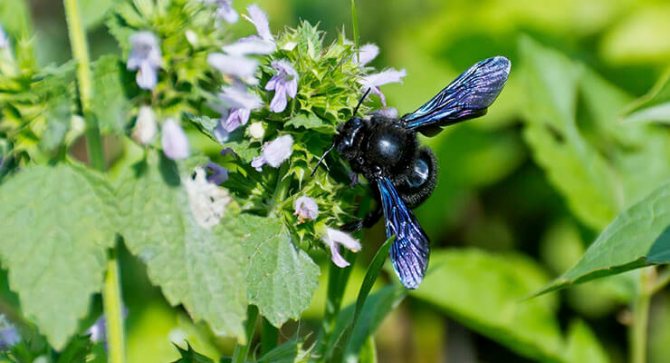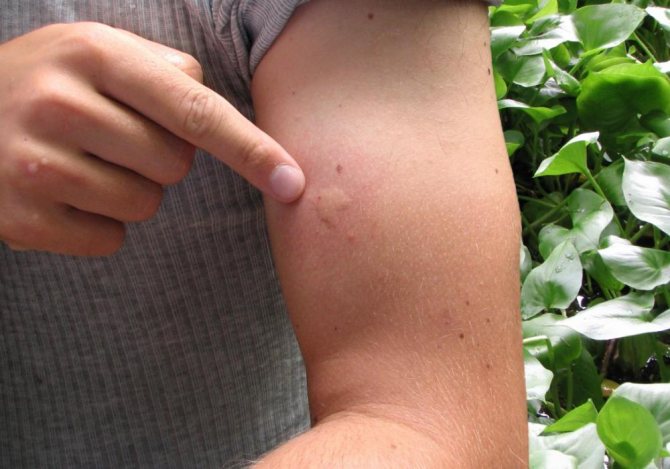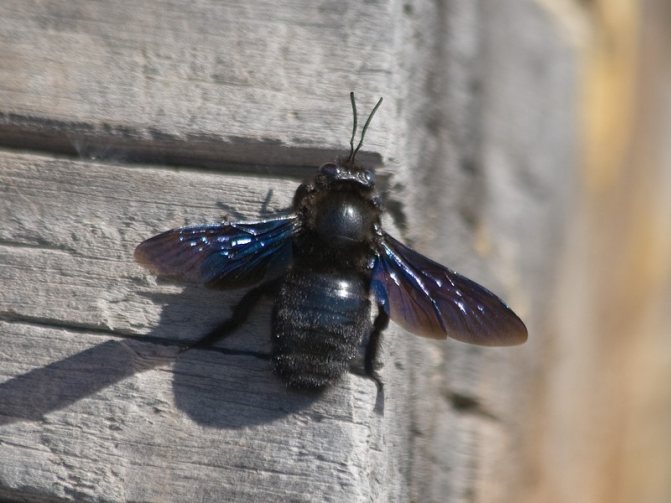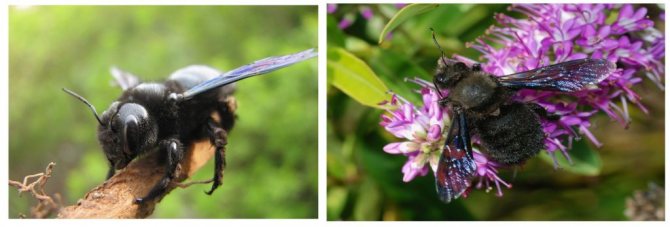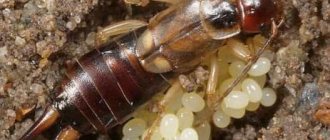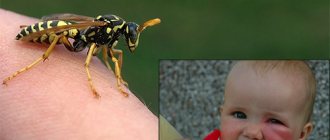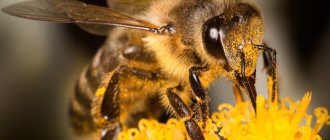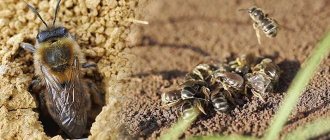Hardworking bees have been known to mankind since prehistoric times. Their ability to pollinate plants and produce honey made humans tame these beneficial insects. But not all types of bees are only beneficial. To date, science knows more than twenty thousand species of bees. One of them is a carpenter bee. This species has more than 700 varieties, the domestication of this species is not yet possible.
Description of appearance and characteristic features
The carpenter bumblebee under the Latin name "Xylocopa violacea" belongs to the Apidae family (true bees) and the genus Xylocopes (carpenter bees). The insect has an impressive size, which adds a certain flavor. This is reflected in the perception - it seems that the bumblebee is showing aggressiveness.
Features of the appearance of the bumblebee carpenter:
- color - black body color with bluish tints on the abdomen, head;
- length - from 2 to 3 cm;
- hairs are sparse, parts of the body look smooth, varnish;
- wings - dark, blue-violet;
- the head is large, equipped with a powerful jaw;
- antennae - black with reddish spots at the ends;
- pubescent parts - paws, back of the abdomen.
- the presence of a sting, which insects sometimes use.

Males and females differ somewhat in appearance. In males, the hind legs are equipped with teeth. Females have a smooth platform, along the edges there are small sharp processes. In males, gray hairs are visible on the back.
It is interesting! There is a species similar in appearance - a large black insect, color and size similar to a carpenter bumblebee. They often live in the same territory. This is an earthen bumblebee.
Species diversity
The purple bees are called Violacea, and the blue bee is Xylocopa Valga, that is, "xylocopa vulgaris". By the way, her wings are not blue, but brown, but outside there are colored scales. In Siberia, these insects are not found, since it would be cold for them to winter. And of course, male carpenter bees hatch from unfertilized eggs, just like the drones of the genus Apis.
The Caffra species will be interesting to study. A black individual with two stripes is a female, and her beau is more like a bumblebee.
Xylocopa caffra species
When collecting nectar, males guard the perimeter of the site, not allowing strangers to fly into it. They protect females from individuals of the same species - that is, from "alien" males. Well, the females in their abdominal cavity carry acariform mites, which are then needed to clean the bamboo from the fungus.
The huge and completely black bee with brown wings is a female of the Sonorina species. The male looks different.
View of Xylocopa Sonorina
The following is noteworthy here: the laying of eggs is carried out all year round. Bees take a break only in bad weather ... Typical habitat - the Mariana Islands and Hawaii.
In America, that is, in Canada and the United States, the Virginian variety is better known. And the Xylocopa Iris species lives in Europe. Closer to Mexico, the Xylocopa Mexicanorum bees are found - their body length does not exceed 15 mm. And then there is the Varipuncta species known in California. This species has a high mortality rate among males.
In India, there are 15 similar species belonging to the genus Xylocopa. What is the source of the error: upon noticing that the bees are black, they are immediately considered to be of the Bhanvra species. This action may not be correct! Bhanvra bees can easily be confused even with the "purple carpenter", that is, with Xylocopa Violacea.
Lifestyle and habitat of carpenter bumblebees
The black bumblebee carpenter is considered a heat-loving insect, therefore, the southern regions and territories of the Middle Strip are suitable for habitation. However, due to global warming, the bumblebee is moving to cooler areas.
Geographic distribution of carpenter bumblebees:
- Ukraine, Belarus;
- Russia - southern and western regions, Novosibirsk;
- Crimean peninsula;
- Turkey, Middle East, Western Asia;
- Caucasus Mountains;
- countries of southern Europe;
- south of Great Britain.
After wintering, bumblebees fly out in April, and are active until September. During this time, the females have time to mate and lay eggs. The bumblebee nests in wood devices. These are dry trees, pillars, buildings and fences. In the selected place, the insect gnaws through passages, in which it creates up to 12 cells with partitions.
On a note! Carpenter bumblebees settle only in sunny areas, avoiding shade. Insects often live near humans.
If ordinary bees have a strict hierarchy in families, then carpenter bumblebees are characterized by a solitary lifestyle. Insects do not have a queen and a large detachment of toilers. The female independently forms the nest, takes care of the brood. Sometimes bumblebees form small colonies.
Other features of bumblebee carpenters:
- a seasonal lifestyle for six months - sometimes adults live for 2 seasons, as they remain for wintering in a special hole in the woody substrate;
- endurance, the ability to fly long distances for food;
- no fear of bad weather, rain or wind;
- perseverance of young animals with adults - up to 10 generations live in one nest.
Mating games are observed among black bumblebees-carpenters. The male begins to court the female in the spring. It climbs as high as possible, then buzzes to get attention. If the female does not react, the male will climb into the nest, which resembles the courtship period in birds.


Prophylaxis
To prevent the appearance of the carpenter bee, you need to do the following:
- No water. Bees rarely settle in dry areas. It is necessary to thoroughly wipe all puddles in the house; in the yard, when leaving, you should not leave an outdoor pool or a decorative pond.
- Bonfires. Insects do not tolerate the smell of smoke. Burning dry grass is good for the cleanliness of the garden, and the absence of bee nests will be a pleasant bonus.
- Essential oils. Citronella oil works especially well - it immediately saves both mosquitoes and bees.
- You can hang bags of mothballs in the house.
- Paint or varnish. It is worth painting an old fence, and it is no longer so attractive to bees. Insects prefer untreated wood.
- Treat leaking walls with putty, after filling all holes with foil or glass wool.
The carpenter bee is a honey insect. It almost does not show aggression, but if it stings, it is poisonous and painful. Attempts to domesticate and tame have been unsuccessful. The population is listed in the Red Book.
Purple bumblebee feeding and breeding
Purple adult carpenter bumblebee eats, like bees, flower nectar, honey, pollen grains. Microbes activate the transfer of food to bee bread, which is eaten by young animals or adults. The secret of the glands turns the bee bread into royal jelly, which the bumblebees use to feed the larvae.
The female is looking for a partner for fertilization in the spring. At the same time, competition is observed - insects defend their territory. Males are polygamous, as the carpenter bumblebee mates with 3-5 females per season.
Stages of development of bumblebees-carpenters:
- the female forms a nest, gnawing passages in the wood with a powerful jaw;
- puts a supply of pollen with nectar at the bottom of each cell;
- lays an egg in the nutritive mass - 1 piece per recess;
- creates a protective layer on top of sawdust connected by saliva;
- on top of the sealed cell, the female again places a nutrient mixture in which she lays an egg - a multi-storey house is obtained;
- the uterus lives until autumn, protecting the nest, and dies by winter.
The larvae hatched from the eggs become pupae by the fall. Then young animals emerge from the cocoons, which remain in the cells for the winter. From April to May, bumblebees gnaw through the protective cocoon and fly out for food. New females are looking for their own nesting site.
On a note! The main condition when choosing a place for masonry is the dryness of the material. Fresh wood is not suitable for placing eggs there. In one place, if possible, several females make moves next to each other.
Tunnel shape
A bee drills a recess in the wood with a depth of 2-3 cm and a diameter of 1 cm. From the recess, the tunnel turns to the side - it will go along the fibers. Inside the tunnel are chambers containing brood, pollen and nectar.
Bush tunnel
When looking for nests, keep in mind the following:
- Xylocopa bees are only interested in dry wood;
- The entrance to the tunnel is always one;
- Unlike ants, bees do not eat fiber. So you can find a taphole by shavings and sawdust.
By the way, the wood should be soft. Birch, oak, beech and ash are not suitable.
If the tree does not dry, the carpenter's nest cannot be located in it. Pillars and old structures made of wood are a more suitable substance.
Habitat, number of generations
On the territory of the Russian Federation, there are two types of bees - "ordinary" and "purple":
- Valga are large bees with a body length of up to 30 mm! The hairs on the abdomen are sparse and black. Blue glitter wings. The area is from the Leningrad region to Tatarstan, including the Middle and South Volga regions.
- Violacea is average body size. Almost all southern regions are habitat.
The Valga bee is found throughout most of Eurasia. She, like the insects Xylocopa Violacea, was included in the Red Book.
Xylocopa Valga view
Two more interesting species are Virginica, that is, the Virginia woodbite, and also Xylocopa Latipes. The latter species lives in the tropics.
The habitat always depends on the physiology, as well as on the way the nests are arranged: it will be cold in a wooden dwelling in winter.
The behavior of the "common bee" has been studied in Russia:
- The female builds a communal and sometimes solitary nest;
- There will always be bends in the tunnel;
- The place of settlement can be loose wood with a fungus;
- One generation emerges every year. The number 2 is characteristic for the Latipes species, and 1 for the Virginica.
Each female lays several dozen eggs in spring and summer, from which young individuals subsequently hatch. By autumn, the brood will be an adult - ready for wintering, awakening and reproduction. Life expectancy exceeds a year.
Life cycle
Dry dead wood will always rot. One nest in Valga bees can last 6-8 years. Then it will be abandoned.
Entrance in the tree
In the spring, the scenario develops like this:
- The bees are awakening, but one of the females will perform the clutch in a single nest. The rest of the bees must create new nests.
- Laying is done after mating. The embryos of females fall into distant cells.
- After laying, the nest will be guarded by the hostess, and in the fall it will be sealed.
When clutching is done, pollen and nectar are needed. The female at this time can travel long distances for food.
For the Valga species, the limit is 5 km, and honeybees fly away from the hive by 11 km. However, the standard distance in apiaries does not exceed a kilometer.
The life of the Xylocopa Valga nest is not very interesting to watch:
- The larvae develop for 21 days, then they begin to pupate. One female is guarding at this time.
- In August, juveniles gnaw through the passages from the chambers, go outside and fly around. Then the males die, and the fertilized females hibernate.
- Another scenario: in September, the nest is sealed and the hostess flies. Young, recently hatched individuals or even cocoons hibernate.
In regions where it is not very hot, the process follows the second scenario.Individuals of bees hibernate in chambers, and in spring they go outside.
Tunnel and new entrances
It turns out that only an abandoned nest can be found in winter.
The usefulness and harm of an insect
The carpenter bumblebee is an insect that feeds on nectar and pollen from a large number of plants. In addition, adults fly long distances and are not afraid of bad weather. Therefore, the benefit lies in pollination of trees, shrubs or crops.
Interesting fact! Insects create nests only in dry and soft woody structures. Females will never settle in fresh material, since the jaws will not be able to gnaw through the passages. This means that the settlement of bumblebees-carpenters in buildings, sheds or fences indicates the need for repair.
A carpenter bumblebee with a black and purple coloration is dangerous to humans. The insect bite is painful. It is especially recommended to beware of these bumblebees in case of allergy to bumblebee venom. Only females can sting, but they will never attack without reason. Bumblebee carpenters exude peacefulness. Having met a person, the insect will simply fly away, sting only when the nest is threatened.
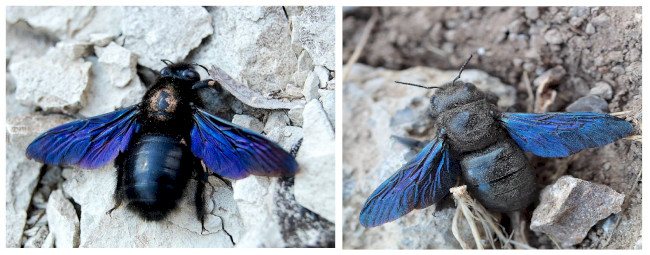

Who to be afraid of
Females of almost all species that settle closer to the equator are very different from males. The black individual is the female, and the male looks smaller and has a hairline. A typical example is the Xylocopa Darwini species inhabiting the Galapagos Islands. "Yellow fur" covers the abdomen of the male, but not the female.


Xylocopa Darwini species
The species Sonorina has the same property, and it also lives in the Galapagos.
The male, such as in the photo, cannot sting. You should not run from females seen on the territory of Russia either:
- Aggressiveness will be low;
- Insects of the genus Xylocopa are considered endangered - this applies to almost all species.
Having noticed a black female, one should not run, but rejoice: entomologists are looking for the cause of extinction. And it will be difficult to follow the mason bee: the flight speed exceeds 20 km / h.
Rules of action for a carpenter bumblebee bite
If a large bumblebee carpenter still attacked, then you need to provide the right help. The bite site turns red, swells, hurts. If you are allergic to proteins and other substances from the venom, there are serious side effects, especially from a bumblebee bite in the neck or head. Therefore, it is important to be aware of the symptoms and actions that can prevent serious consequences from an insect attack.
Symptoms and effects of bumblebee bites
After a bumblebee bite, a smooth sting either remains under the skin or not. However, the symptoms do not change because of this. Everything is aggravated if a person has an allergic reaction to the components of the injected poison.
Characteristic signs of a bumblebee bite:
- soreness;
- local temperature rise;
- itching, burning, redness;
- swelling, swelling;
- compaction of the lesion site.
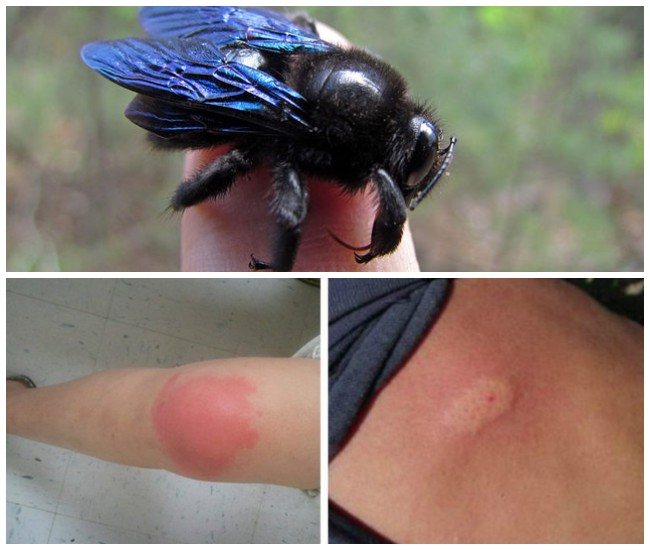

The onset of symptoms occurs in the first minutes after the sting digs under the skin. A peculiar reaction usually lasts several days, depending on the characteristics of the organism. If you scratch the bite site, then the problem will only worsen and drag on for a long time.
The negative effects are associated with allergies. Examples:
- extensive redness and swelling beyond the bite site;
- the appearance of a rash, large blisters on the body;
- gastrointestinal tract reaction - nausea, vomiting, diarrhea;
- breathing difficulties, choking;
- chills, general fever, fever;
- interruptions in the work of the heart or blood vessels.
With a sharp and powerful allergic response, it is likely that anaphylactic shock will occur. There is a lack of air, convulsions, dizziness, loss of consciousness. No less dangerous are multiple bites, which are characterized by general weakness, nausea, and a change in heart rate.
First aid when attacking a black and blue bumblebee
After the bumblebee stings, a number of actions are required to reduce the onset of symptoms and prevent serious consequences.These are usually fairly standard procedures for an insect bite. Instructions:
- Remove the sting if it remains in the skin so that high intoxication does not develop.
- Treat the affected area with an antiseptic solution (potassium permanganate, hydrogen peroxide, alcohol) - reducing the risk of secondary infection.
- Make a cold compress to relieve pain, reduce swelling.
- Take an antihistamine to relieve or prevent allergy symptoms.
- Drink plenty of liquid to remove toxic substances from the body.
- Call an ambulance immediately if you feel unwell quickly.
At the same time, it is forbidden to kill the insect, as other members of the family may flock. It is also recommended to refrain from scratching, as this spreads the infection. The use of sleeping pills or alcoholic beverages is unacceptable.
Allergic reaction to bumblebee venom
After the bite, poison and insect saliva are injected into the blood. Some people develop an allergic response to the toxin or proteins. This reaction does not occur immediately. The first contact with a bumblebee produces antibodies. When the antigen (allergen) gets in again, the characteristic symptoms of an allergic response are already manifested.
Antihistamines for a bumblebee bite: Psilo-balm, Fenistil-gel, Claritin and Suprastin.
Prevention of an attack
It is recommended to avoid the attacks of bumblebees-carpenters according to the following rules: do not make sharp waving movements; do not walk barefoot on the grass. In addition, in nature, it is better not to wear bright clothes and not to use perfume with a strong aroma, to minimize the area of open areas of the body. Nets on windows help from flying insects. If there is sweet food or fruit nearby, then you need to make sure that bumblebees do not sit down.
How to deal with wood bees
The fight against wood bees is carried out by several available means. It is important not to kill bees in large numbers, since woody insects are rare and are included in the Red Book. But leaving them from year to year on the site is not recommended, since insects are dangerous in large numbers for humans. Children most often suffer, insects are the most dangerous for allergy sufferers.
The blue carpenter bee can become a real disaster if it settles in the logs of a house or in a barn. The most popular and easiest way is to use loud music. It will help if woody insects appear in the garden or on the site. It is enough to take the audio system with loud bass out into the street, after a while you can find a positive result. The main thing is that the neighbors do not mind.
How to get rid of a carpenter bee in your home
It will not work to get rid of the carpenter bee in the house with the help of loud music - there are too many inconveniences for the residents themselves. Therefore, other methods are used:
- boric acid or carbaryl - used to destroy active hornets' nests;
- specialized powdered pesticides;
- tree bee trap.
The trap is used not only in the house, but also on the site. It is easy to make with your own hands.
How to destroy a carpenter bee in a barn
In non-residential premises and on the site, the carpenter bee can be easily removed with special pesticides that eliminate active nests. If such means are not at hand, there are more readily available substances:
- a carburetor cleaner - any motorist can find it in the garage, and the bees will not die from spraying this substance, but will quickly leave their habitat;
- gasoline, diesel fuel - they are poured directly into the nests, and the action occurs almost immediately, after the liquids enter the nests of the wood bee;
- mechanical action helps if there are not many bees on the site, in which case they can be knocked down with a racket or a net, and then crushed.
Attention! The mechanical method is based on the fact that this species of bees often hangs in the air without moving.


With a mechanical method of destruction, it is important to be careful so that the insect does not bite. There can be complications, especially if you have an allergic reaction. It is necessary to knock down a hovering insect with one blow, then immediately crush it.




